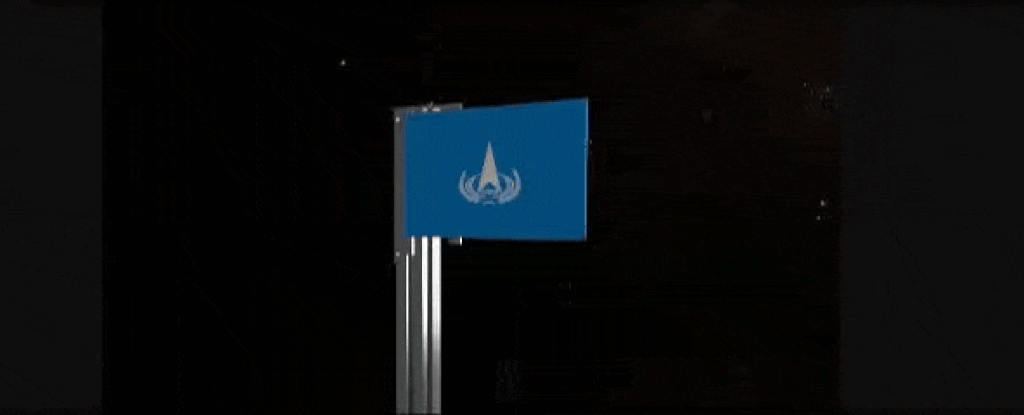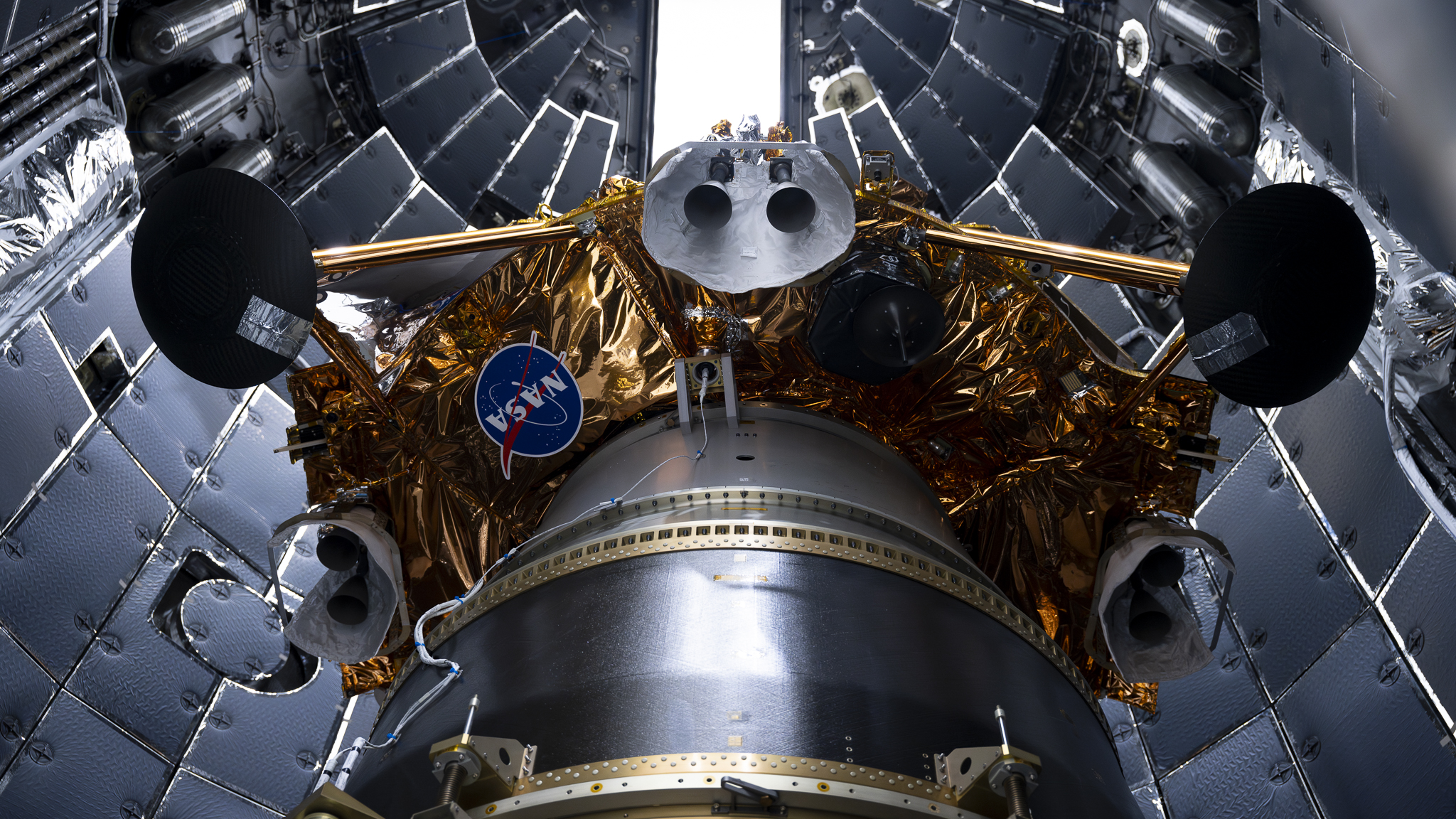Ten NASA Science, Tech Instruments Flying to Moon on Firefly Lander
As part of NASA’s CLPS (Commercial Lunar Payload Services) initiative and Artemis campaign, the agency is preparing to fly ten instruments aboard Firefly Aerospace’s first delivery to the Moon. These science payloads and technology demonstrations will help advance our understanding of the Moon and planetary processes, while paving the way for future crewed missions on […]

As part of NASA’s CLPS (Commercial Lunar Payload Services) initiative and Artemis campaign, the agency is preparing to fly ten instruments aboard Firefly Aerospace’s first delivery to the Moon. These science payloads and technology demonstrations will help advance our understanding of the Moon and planetary processes, while paving the way for future crewed missions on the Moon and beyond, for the benefit of all.
Firefly’s lunar lander, named Blue Ghost, is scheduled to launch on a SpaceX Falcon 9 rocket Wednesday, Jan.15, from Launch Complex 39A at NASA’s Kennedy Space Center in Florida. After a 45-day cruise phase, Blue Ghost is targeted to land near a volcanic feature called Mons Latreille within Mare Crisium, a basin approximately 340 miles wide (550 kilometers) located in the northeast quadrant of the Moon’s near side.
How can we enable more precise navigation on the Moon? How do spacecraft interact with the lunar surface? How does Earth’s magnetic field influence the effects of space weather on our home planet? NASA’s instruments on this flight will conduct first-of-their-kind demonstrations to help answer these questions and more, including testing regolith sampling technologies, lunar subsurface drilling capabilities, increasing precision of positioning and navigation abilities, testing radiation tolerant computing, and learning how to mitigate lunar dust during lunar landings.
The ten NASA payloads aboard Firefly’s Blue Ghost lander include:
- Lunar Instrumentation for Subsurface Thermal Exploration with Rapidity (LISTER) will measure heat flow from the Moon’s interior by measuring the thermal gradient, or changes in temperature at various depths, and thermal conductivity, or the subsurface material’s ability to let heat pass through it. LISTER will take several measurements up to 10 feet deep using pneumatic drilling technology with a custom heat flow needle instrument at its tip. Data from LISTER will help scientists retrace the Moon’s thermal history and understand how it formed and cooled. Lead organization: Texas Tech University
- Lunar PlanetVac (LPV) is designed to collect regolith samples from the lunar surface using a burst of compressed gas to drive the regolith into a sample chamber (sieving) for collection and analysis by various instruments. Additional instrumentation will then transmit the results back to Earth. The LPV payload is designed to help increase the science return from planetary missions by testing low-cost technologies for collecting regolith samples in-situ. Lead organization: Honeybee Robotics
- Next Generation Lunar Retroreflector (NGLR) serves as a target for lasers on Earth to precisely measure the distance between Earth and the Moon by reflecting very short laser pulses from Earth-based Lunar Laser Ranging Observatories. The laser pulse transit time to the Moon and back is used to determine the distance. Data from NGLR could improve the accuracy of our lunar coordinate system and contribute to our understanding of the inner structure of the Moon and fundamental physics questions. Lead organization: University of Maryland
- Regolith Adherence Characterization (RAC) will determine how lunar regolith sticks to a range of materials exposed to the Moon’s environment throughout the lunar day. RAC will measure accumulation rates of lunar regolith on surfaces (for example, solar cells, optical systems, coatings, and sensors) through imaging to determine their ability to repel or shed lunar dust. The data captured will help test, improve, and protect spacecraft, spacesuits, and habitats from abrasive regolith. Lead organization: Aegis Aerospace
- Radiation Tolerant Computer (RadPC) will demonstrate a computer that can recover from faults caused by ionizing radiation. Several RadPC prototypes have been tested aboard the International Space Station and Earth-orbiting satellites, but this flight will provide the biggest trial yet by demonstrating the computer’s ability to withstand space radiation as it passes through Earth’s radiation belts, while in transit to the Moon, and on the lunar surface. Lead organization: Montana State University
- Electrodynamic Dust Shield (EDS) is an active dust mitigation technology that uses electric fields to move and prevent hazardous lunar dust accumulation on surfaces. EDS is designed to lift, transport, and remove particles from surfaces with no moving parts. Multiple tests will demonstrate the feasibility of the self-cleaning glasses and thermal radiator surfaces on the Moon. In the event the surfaces do not receive dust during landing, EDS has the capability to re-dust itself using the same technology. Lead organization: NASA’s Kennedy Space Center
- Lunar Environment heliospheric X-ray Imager (LEXI) will capture a series of X-ray images to study the interaction of solar wind and Earth’s magnetic field that drives geomagnetic disturbances and storms. Deployed and operated on the lunar surface, this instrument will provide the first global images showing the edge of Earth’s magnetic field for critical insights into how space weather and other cosmic forces surrounding our planet impact Earth. Lead organizations: Boston University, NASA’s Goddard Space Flight Center, and Johns Hopkins University
- Lunar Magnetotelluric Sounder (LMS) will characterize the structure and composition of the Moon’s mantle by measuring electric and magnetic fields. This investigation will help determine the Moon’s temperature structure and thermal evolution to understand how the Moon has cooled and chemically differentiated since it formed. Lead organization: Southwest Research Institute
- Lunar GNSS Receiver Experiment (LuGRE) will demonstrate the possibility of acquiring and tracking signals from GNSS (Global Navigation Satellite System) constellations, specifically GPS and Galileo, during transit to the Moon, during lunar orbit, and on the lunar surface. If successful, LuGRE will be the first pathfinder for future lunar spacecraft to use existing Earth-based navigation constellations to autonomously and accurately estimate their position, velocity, and time. Lead organizations: NASA Goddard, Italian Space Agency
- Stereo Camera for Lunar Plume-Surface Studies (SCALPSS) will use stereo imaging photogrammetry to capture the impact of the rocket exhaust plume on lunar regolith as the lander descends on the Moon’s surface. The high-resolution stereo images will aid in creating models to predict lunar regolith erosion, which is an important task as bigger, heavier spacecraft and hardware are delivered to the Moon in close proximity to each other. This instrument also flew on Intuitive Machines’ first CLPS delivery. Lead organization: NASA’s Langley Research Center
Through the CLPS initiative, NASA purchases lunar landing and surface operations services from American companies. The agency uses CLPS to send scientific instruments and technology demonstrations to advance capabilities for science, exploration, or commercial development of the Moon. By supporting a robust cadence of lunar deliveries, NASA will continue to enable a growing lunar economy while leveraging the entrepreneurial innovation of the commercial space industry.
Learn more about CLPS and Artemis at: http://www.nasa.gov/clps
Alise Fisher
Headquarters, Washington
202-358-2546
alise.m.fisher@nasa.gov
Natalia Riusech / Nilufar Ramji
Johnson Space Center, Houston
281-483-5111
natalia.s.riusech@nasa.gov / nilufar.ramji@nasa.gov
What's Your Reaction?








































